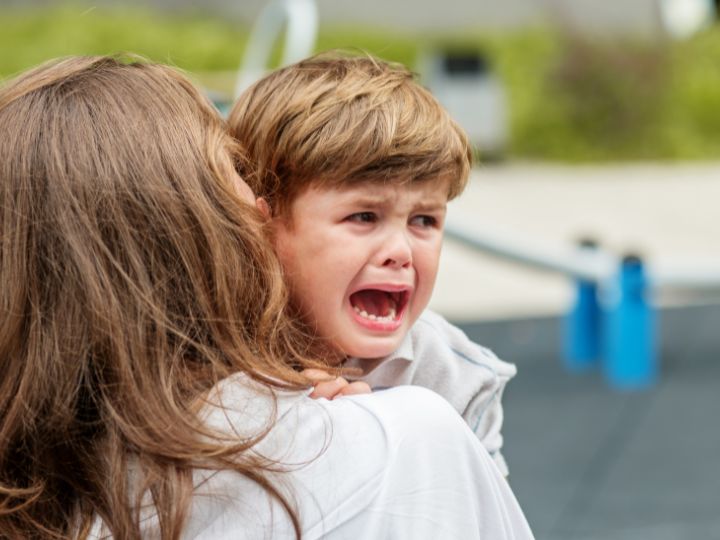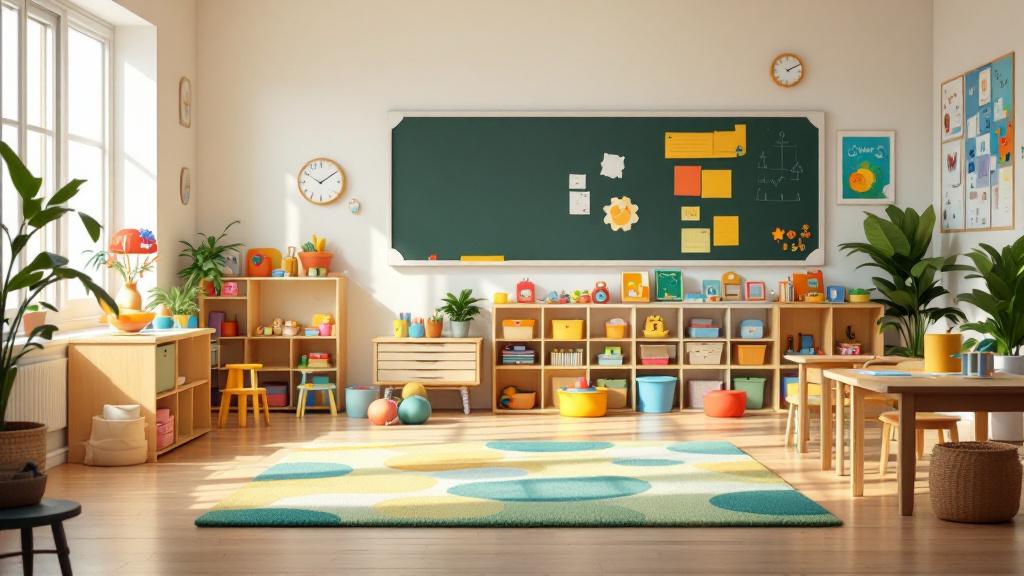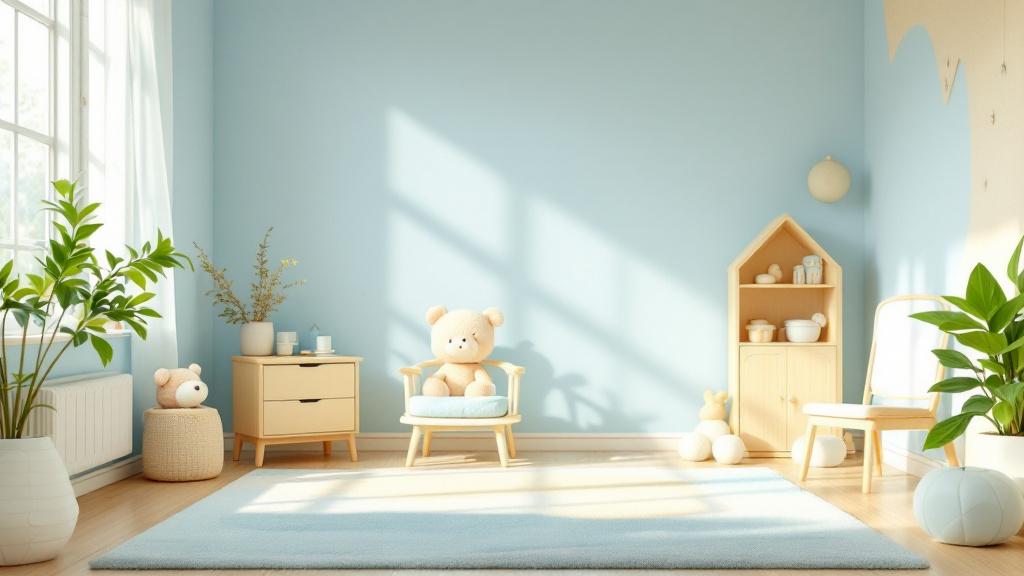When a child is screaming, crying, or acting out, it can be challenging for parents, teachers, and caregivers to determine whether they're witnessing a sensory meltdown or a behavioral outburst. While these two phenomena may look similar on the surface, they have fundamentally different causes and require entirely different approaches to support and intervention.
Understanding the distinction between sensory meltdowns and behavioral outbursts is crucial for providing appropriate help and creating environments where children can thrive. This comprehensive guide will help you identify the key differences, understand the underlying causes, and learn effective strategies for supporting children through both types of episodes.
What Are Sensory Meltdowns?
A sensory meltdown is an involuntary response to overwhelming sensory input or sensory needs not being met. It's a neurological reaction where the child's nervous system becomes dysregulated, leading to a loss of behavioral control. Think of it as the brain's "circuit breaker" being overloaded and shutting down normal functioning.
Sensory meltdowns are most commonly associated with sensory processing disorder (SPD), autism spectrum disorder, ADHD, and other neurodevelopmental conditions. However, any child can experience sensory overwhelm under the right circumstances.
Common Triggers for Sensory Meltdowns
Sensory meltdowns can be triggered by various sensory experiences:
Auditory triggers include loud noises, unexpected sounds, multiple conversations happening simultaneously, or certain frequencies that feel particularly jarring to sensitive ears.
Visual triggers encompass bright or flickering lights, busy patterns, crowded environments, or sudden changes in lighting conditions.
Tactile triggers involve unexpected touch, certain fabric textures, sticky or wet sensations, or changes in temperature.
Proprioceptive and vestibular triggers relate to body position and movement, such as being moved unexpectedly, changes in routine that affect the child's sense of where their body is in space, or lack of heavy work input that some children need for regulation.
Interoceptive triggers involve internal body sensations like hunger, thirst, need to use the bathroom, or feeling too hot or cold.
What Are Behavioral Outbursts?
Behavioral outbursts, on the other hand, are goal-oriented behaviors used to communicate needs, wants, or emotions. These are learned responses that serve a specific function for the child, such as getting attention, escaping a demand, accessing a preferred item or activity, or expressing frustration when they lack the communication skills to do so appropriately.
Unlike sensory meltdowns, behavioral outbursts involve some level of conscious control and are influenced by environmental consequences. The child is using the behavior as a form of communication or as a means to achieve a desired outcome.
Common Functions of Behavioral Outbursts
Understanding the function behind a behavioral outburst is key to addressing it effectively:
Attention-seeking behaviors occur when children haven't learned appropriate ways to gain attention from adults or peers, or when positive attention is scarce in their environment.
Escape or avoidance behaviors help children get out of situations they find difficult, boring, or anxiety-provoking, such as challenging academic tasks or social situations.
Access to tangibles involves behaviors aimed at obtaining preferred items, activities, or experiences that have been denied or are unavailable.
Communication of needs happens when children lack the verbal or social skills to express their wants, needs, or emotions appropriately.
Key Differences Between Sensory Meltdowns and Behavioral Outbursts
Timing and Predictability
Sensory meltdowns often seem to come out of nowhere, though they may follow exposure to specific sensory triggers. The child may appear fine one moment and completely dysregulated the next. However, careful observation often reveals subtle signs of building sensory overload before the meltdown occurs.
Behavioral outbursts, conversely, are more predictable and often occur in specific contexts or situations. They tend to happen when the child wants something they can't have, needs to escape a situation, or is trying to communicate a need.
Duration and Recovery
Sensory meltdowns typically last longer and have a more gradual recovery period. The child may seem exhausted afterward and need significant time to return to baseline functioning. Some children may even need to sleep or have quiet time after a sensory meltdown.
Behavioral outbursts usually resolve more quickly, especially once the child achieves their goal or the situation changes. Recovery is generally faster, and the child can often return to normal activities relatively soon after the episode ends.
Response to Intervention
During a sensory meltdown, attempts at reasoning, negotiating, or providing consequences are generally ineffective because the child's nervous system is dysregulated. The most helpful interventions focus on reducing sensory input and providing comfort and safety until the child's system can reset.
During behavioral outbursts, logical consequences, redirection, and problem-solving strategies may be more effective because the child maintains some level of cognitive control and can process information, even while emotionally elevated.
Triggers and Antecedents
Sensory meltdowns are triggered by sensory experiences or unmet sensory needs. These might include environmental factors like noise levels, lighting, or crowds, or internal factors like hunger, fatigue, or illness that affect sensory processing.
Behavioral outbursts are more often triggered by social or environmental demands, changes in routine, denial of preferred activities, or situations where the child feels frustrated or misunderstood.
Physical Presentation
During sensory meltdowns, children often show signs of nervous system dysregulation such as changes in breathing patterns, skin color, or body temperature. They may engage in self-soothing behaviors like rocking, covering their ears, or seeking deep pressure.
Behavioral outbursts may involve more goal-directed physical actions like reaching for desired items, moving toward or away from specific people or places, or engaging in attention-seeking behaviors.
Observational Strategies for Accurate Identification
Keep Detailed Records
Maintaining an ABC (Antecedent-Behavior-Consequence) log can help identify patterns. Record what happened before the episode (antecedents), describe the behavior objectively, and note what happened afterward (consequences). Over time, patterns will emerge that can help distinguish between sensory and behavioral episodes.
Include environmental factors in your observations: time of day, noise levels, lighting conditions, who was present, what activities were happening, and any changes to routine.
Look for Warning Signs
Sensory meltdowns often have subtle precursors that can be observed if you know what to look for. These might include increased fidgeting, covering ears or eyes, seeking or avoiding certain textures, changes in activity level, or verbal expressions of discomfort with sensory experiences.
Behavioral outbursts may be preceded by testing behaviors, increased demands for attention, attempts to negotiate, or escalating protests against expectations or limits.
Consider the Child's Communication Level
Children with limited verbal communication skills may rely more heavily on behavioral outbursts to express their needs. However, they can still experience sensory meltdowns that are completely separate from their communication challenges.
Consider whether the child has other ways to communicate their needs and whether those communication methods are being honored and responded to appropriately.
Supporting Children Through Sensory Meltdowns
Immediate Response Strategies
When a sensory meltdown occurs, the primary goal is to help the child's nervous system regulate. Reduce sensory input by dimming lights, reducing noise, and minimizing visual clutter. Provide a safe, calm space where the child can recover without additional stimulation.
Avoid talking excessively during the meltdown, as auditory processing may be compromised. Instead, use calm, quiet voices and minimal language. Physical comfort should be offered based on the child's preferences – some children find deep pressure calming, while others need space.
Long-term Prevention Strategies
Work with occupational therapists who specialize in sensory processing to develop a comprehensive sensory diet – a personalized plan of activities that help the child maintain optimal arousal levels throughout the day.
Identify and modify environmental triggers when possible. This might involve using noise-canceling headphones, providing fidget tools, adjusting lighting, or creating sensory-friendly spaces in the home or classroom.
Teach the child to recognize their own sensory needs and provide them with appropriate tools and language to communicate when they're becoming overwhelmed.
Creating Sensory-Friendly Environments
Consider sensory factors in all environments where the child spends time. This includes evaluating lighting (natural light is often better than fluorescent), acoustics (carpets and soft furnishings can reduce echo and ambient noise), and visual organization (reducing clutter and providing clear visual boundaries).
Provide regular sensory breaks and opportunities for sensory input that the child finds regulating. This might include movement breaks, opportunities for heavy work like carrying books or pushing chairs, or access to calming sensory tools.
Managing Behavioral Outbursts
Understanding the Function
The first step in addressing behavioral outbursts is determining their function. Is the child trying to get attention, escape a demand, access something they want, or communicate a need? Once you understand the "why" behind the behavior, you can teach more appropriate ways to meet that same need.
Functional behavior assessment, often conducted by behavior analysts or school psychologists, can help identify these patterns and develop targeted intervention plans.
Teaching Replacement Behaviors
Every behavioral outburst serves a function for the child, so simply trying to eliminate the behavior without teaching an alternative will likely be unsuccessful. Instead, focus on teaching functionally equivalent replacement behaviors – appropriate ways for the child to meet the same need.
For attention-seeking behavior, teach appropriate ways to request attention. For escape behavior, teach appropriate break requests. For access to tangibles, teach appropriate requesting skills.
Consistent Response Strategies
Develop consistent response plans that all caregivers can implement. This includes how to respond during the outburst, what consequences will be applied, and how to redirect the child toward more appropriate behaviors.
Consistency across all environments (home, school, therapy settings) is crucial for helping children learn new patterns of behavior.
Positive Reinforcement
Focus heavily on reinforcing appropriate behaviors when they occur. Many children who engage in behavioral outbursts have learned that inappropriate behavior is more effective at getting their needs met than appropriate behavior.
Make sure appropriate communication and coping strategies are consistently acknowledged and rewarded, making them more attractive options than behavioral outbursts.
When to Seek Professional Support
Occupational Therapy for Sensory Processing
If sensory meltdowns are frequent or severe, an evaluation by an occupational therapist trained in sensory integration can be invaluable. These professionals can assess the child's sensory processing patterns, identify specific areas of difficulty, and develop targeted intervention strategies.
Occupational therapy for sensory processing issues often includes direct therapy sessions, environmental modifications, and training for families and educators on how to support the child's sensory needs.
Applied Behavior Analysis (ABA) Therapy
For persistent behavioral outbursts that don't respond to typical parenting or classroom management strategies, consultation with a behavior analyst may be helpful. ABA professionals can conduct functional behavior assessments and develop comprehensive behavior intervention plans.
Organizations like Heartwise Support Group provide resources and connections to qualified professionals who can help families navigate these challenges with evidence-based approaches.
Collaborative Approach
The most effective interventions often involve collaboration between multiple professionals. A team might include occupational therapists, behavior analysts, speech-language pathologists, psychologists, and educators working together to address both sensory and behavioral needs.
Regular team meetings and shared goal-setting ensure that all interventions are working together rather than at cross-purposes.
The Importance of Self-Care for Caregivers
Supporting children through sensory meltdowns and behavioral outbursts can be emotionally and physically exhausting for caregivers. It's important to recognize that your own regulation affects your ability to help the child.
Develop your own coping strategies and support systems. This might include taking breaks when possible, practicing stress-reduction techniques, connecting with other parents facing similar challenges, and seeking professional support when needed.
Remember that learning to distinguish between sensory meltdowns and behavioral outbursts is a skill that develops over time. Be patient with yourself as you learn to read your child's cues and develop effective response strategies.
Building Understanding and Empathy
Whether dealing with sensory meltdowns or behavioral outbursts, it's crucial to remember that children are not choosing to be difficult. Sensory meltdowns are involuntary neurological responses, and behavioral outbursts are often the result of skill deficits in communication or coping strategies.
Approach each episode with curiosity rather than judgment. What is this child trying to tell us? What do they need in this moment? How can we help them be successful?
Building this understanding takes time, patience, and often professional guidance, but it leads to more effective interventions and stronger relationships with the children in our care.
Moving Forward with Confidence
Understanding the difference between sensory meltdowns and behavioral outbursts is just the beginning. The goal is to create environments and relationships that prevent both types of episodes when possible and respond effectively when they do occur.
This means addressing underlying sensory needs, teaching appropriate communication and coping skills, maintaining consistent and supportive responses, and building the child's confidence in their ability to navigate challenging situations.
With time, patience, and appropriate support, most children can learn to better regulate their sensory systems and communicate their needs more effectively, leading to fewer episodes of both types and greater success in all areas of their lives.
Remember that every child is unique, and what works for one child may not work for another. Stay flexible, keep learning, and don't hesitate to seek professional guidance when needed. The investment in understanding and supporting these children pays dividends in their long-term success and well-being.











